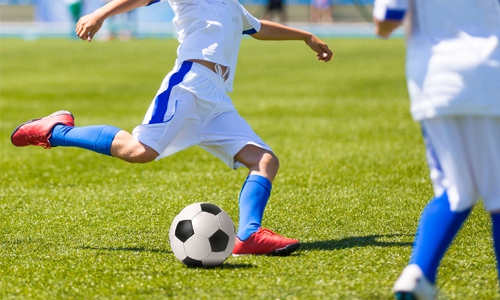
Take proper care of yourself. Eat healthy. Get enough rest. Exercise regularly.
Exercise can take many different forms. It’s best to start with low-intensity workouts, such as strolling, walking briskly, swinging your arms, leg lifts, and aerobics. Once you’re comfortable with those workouts, then you can increase the intensity. It’s important to remember, though, that exercise is not about trying to compete with others. Instead, choose workouts that are appropriate for you and will meet your goals.
The main goal of exercise should be to engage major muscle groups, such as the those in the arms, legs, or abdomen, along with the heart and lungs. The purpose should be to make those muscles work, which will strengthen them.
Carefully monitor yourself during exercise. If your heart is beating so hard or you feel exhausted to the point that you can’t speak or feel as if you’re doing to faint, then rest. Don’t overdo it. While exercise should be done regularly, high intensity workouts are only needed occasionally.
Before exercising, you should warm up for 5-10 minutes to allow the blood to flow throughout your body and prepare it for the workout. And, once the workout if finished, you shouldn’t immediately stop all activity. Instead, go through a cooldown routine until your breathing returns to normal.
Football (soccer) is a really popular sport. Knee injuries, though, are the second most common injury in football players behind ankle injuries. Knee injuries also have serious long-term effects and can take several months to heal. There is an adage in sports that once a knee injury occurs in an athlete, his future is over.
That’s less true today, though, because our understanding of the knee has really improved, making it possible to treat and heal knee injuries. Injuries that were once career-ending can now be resolved through new treatment approaches with excellent outcomes. It’s even possible for athletes to return at nearly the same level as before the injury. Nevertheless, prevention is still better than the cure.
Most injuries occur as the result of collisions. When a collision occurs or the knee is impacted, the knee twists, especially if the foot is firmly planted on the ground. Therefore, having quick feet and running on your toes can help reduce the amount of twisting that occurs during impact.
In cases where knee injuries are not caused by impact, the problem is often that musckes are tight or weak. These types of injuries, however, tend to occur gradually, as opposed to a sudden tear.
The bottom line is... Every action has a reaction. Sure, past injuries and unconditioned muscles are important factors affecting the knee, but the health of your knee is not in isolation. Whether it’s on-field conditioning, your shoes, or your teammates’ attitudes, all these factors are important to preventing injuries.
However, if you do get injured, wait for first aid. That means don’t move at first. Lie still and wait for a friend or trainer to check it out. Use a cold compress immediately.
After some time, you can try moving your knee. Take note of any pain: where does it occur and when? Start by bending and straightening your knees. Slowly try to put your weight back on it. Note whether any swelling occurs or if you noticed any sound like a tendon tearing during the injury. All these observations will be helpful for the doctor to properly diagnose the injury.
However, if it’s too painful to move or the knee is deformed, then you’ll need to immobilize the knee with a splint and wrap it in bandage.
NEVER try to push, pull, or adjust the knee joint in any way! Immobilize the knee with a splint until you can get medical attention.
The appropriate treatment will depend on which part of the knee has been injured. A specialist will start by performing a physical examination, compiling your medical history, and possibly taking an X-ray. Depending on the results, further testing may be needed. However, if the knee was immediately swollen from the injury, this indicates a ligament may be torn resulting in some bleeding. Historically, this is an ACL tear in 80% of cases. And, in 60% of ACL tears, there is also a torn meniscus.
If that’s the case, doctors usually put on a knee brace and prescribe medication to reduce inflammation for about a week. Once the swelling and inflammation has subsided enough, they will consider laparoscopic surgery.
The key question is... Why is surgery necessary?
Because the ACL is tightly stretched between the thigh bone and shin bone, it holds a lot of tension. Therefore, if the ACL tears, each end of the ligament shrinks away from the other. When this happens, self-healing cannot occur.
Currently, laparoscopic surgery can be used to treat injuries to any ligament or cartilage (e.g., meniscus, ACL, etc.). It’s considered an effective treatment, allowing for physical therapy to provide quick recovery. The patient can bend the knee after only 24 hours, making immediate physical therapy possible. Depending on the injury, crutches may be necessary for some time, though.